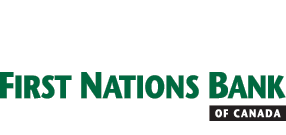
Tied Selling
Legal Notices and Disclaimers of Liability
To Our Customers
Coercive Tied Selling - What You Need to Know
The Bank Act requires banks to inform customers in plain language that coercive tied selling is illegal. To comply with the law, First Nations Bank of Canada is providing this information explaining:
- What coercive tied selling is, and
- What coercive tied selling is not.
Coercive tied selling is prohibited under Section 459.1 of the Bank Act. More specifically, it is against the law for a bank to "impose undue pressure on, or coerce, a person to obtain a product or service from a particular person, including the bank and any of its affiliates, as a condition for obtaining another product or service from the bank."
You cannot be unduly pressured to buy a product or service that you don't want from a bank or one of its affiliates, in order for the bank to agree to provide another bank product or service to you.
The following two examples will help to explain coercive tied selling and what is not allowed.
- Your bank's mortgage specialist tells you that you qualify for a home mortgage. However, you are also told that the bank will approve your mortgage only if you transfer your investments to the bank or its affiliates. You want the mortgage, but you do not want to move your investments.
- Your bank's credit officer tells you that you qualify for a loan, with which you did not intend to buy First Nations Bank of Canada investment products. However, you are also told that the bank will approve your loan only if you use the money to buy First Nations Bank of Canada investment products. You want the loan, but you want to invest the money somewhere else.
Preferential pricing means offering customers a better price or rate on all or part of their business. For example, a fast food outlet offers a $0.19 hamburger if you buy a large fries and a drink. A shoe store offers a second pair of shoes at half price.
Similarly, a bank may be able to offer you preferential pricing - a higher interest rate on investments or a lower interest rate on loans - if you use more of its products or services. The following two examples will help to explain preferential pricing in banks.
- After approving your application for a home mortgage from the bank, your bank's mortgage specialist tells you that this mortgage would be available at a lower interest rate if you transferred your investments to the bank or its affiliates.
- After approving your application for a loan to make a contribution to your Registered Retirement Savings Plan (RRSP), your bank's credit officer offers you a lower interest rate if you use the loan to buy the bank's mutual funds.
The above practices are acceptable. The approval of your mortgage and RRSP loan is not conditional on your taking another bank product or service. Rather, you are offered preferential pricing to encourage you to give the bank more business.
Products or services are often combined to give consumers better prices, incentives or more favourable terms.
By linking or bundling their products or services, businesses are often able to offer them to you at a lower combined price than if you bought each product on its own. For example, a fast food chain advertises a meal combination that includes a hamburger, fries and a drink. The overall price is lower than if you bought the three items separately.
Similarly, banks may offer you bundled financial services or products so that you can take advantage of package prices that are less than the sum of the individual items.
The following example will help to explain the bundling of bank products and services.
- You plan to open a bank account that charges you for individual transactions. The banking representative offers you a package of services that includes a comparable bank account, a credit card with no annual fee and a discount on purchasing travellers cheques. The total price for the package is less than if you purchased each part of the package separately.
To ensure the safety of their depositors, creditors and shareholders, banks must carefully manage the risk on the loans and credit cards they approve. Therefore the law allows us to impose certain requirements on borrowers as a condition for granting a loan - but only to the extent necessary for us to manage our risk.
The following example will help to explain how banks manage such risk.
- You apply for an operating loan for your business. To manage the risk associated with the loan, your bank requires your business to have an operating account with the bank as a condition for obtaining the loan.
The above example is legal and appropriate. Having your business's operating account at the bank allows your bank to assess possible risks associated with your business's cash flow and manage the risk associated with the loan.
At First Nations Bank of Canada, our requirements for borrowers will be reasonable and consistent with our level of risk.
If you would like more information contact us




